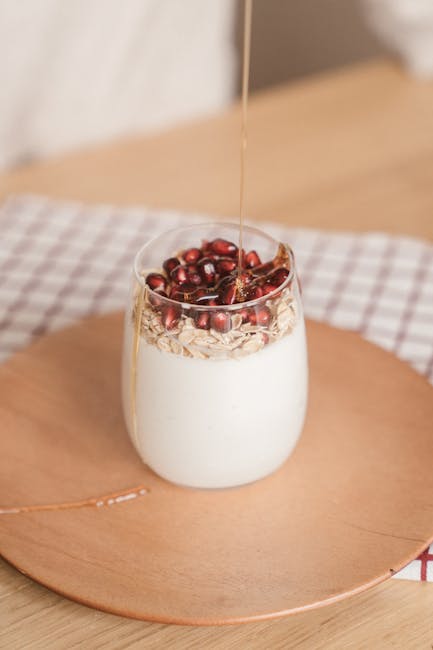Carrots, a humble root vegetable with a vibrant orange hue, boast a surprisingly rich history and global presence. Cultivated for millennia, their origins trace back to the wild ancestor, Daucus carota, a pale, thin, and often purple root found in Europe and Asia. While initially cultivated for their greens, the sweet, succulent root we know today emerged through selective breeding, primarily in the Middle East and the Netherlands, sometime before the 17th century. The Dutch, in particular, played a significant role in developing the large, orange carrot we’re familiar with, a vibrant color linked to the glorification of the House of Orange.
The practice of roasting vegetables, meanwhile, is far older and more widespread. Ancient civilizations utilized fire to both cook and preserve food, with roasting being a common method across numerous cultures. While the precise origins of roasting carrots specifically are difficult to pinpoint, the technique’s inherent simplicity ensures its place in culinary traditions across the globe. The combination of roasting and sweetening with honey, however, is likely a more recent development, reflecting the evolving tastes and global exchange of culinary ideas. Today, carrots are the 10th most produced vegetable globally, with China leading production, highlighting their enduring importance in the world’s food systems.
The cultural significance of carrots varies greatly. In some cultures, they represent good luck or prosperity, while in others, they hold medicinal value. The bright orange color, rich in beta-carotene, which the body converts to vitamin A, has long been associated with health and vitality. Roasted carrots with honey represent a simple yet elegant preparation, balancing the earthy sweetness of the carrot with the rich, golden notes of honey. This recipe, easily adaptable to different taste preferences, allows for a delicious and healthy side dish that blends ancient cooking techniques with modern culinary sensibilities, demonstrating the enduring appeal of this versatile root vegetable.
Ingredients and Measurements
This recipe for Roasted Carrots with Honey yields approximately 4 servings. The quantities can be easily adjusted to suit your needs – simply multiply or divide the ingredient amounts proportionally. For instance, doubling the recipe will provide enough for 8 servings.
Carrots: You’ll need 1 pound (approximately 450 grams) of carrots. Choose carrots that are firm and brightly colored, indicating freshness and sweetness. Avoid carrots that are soft, shriveled, or have blemishes. The type of carrot doesn’t drastically affect the outcome, but if you have access to heirloom varieties, their unique flavors will add a delightful complexity to the dish. Feel free to experiment!
Olive Oil: We’ll use 2 tablespoons (30 milliliters) of good quality extra virgin olive oil. Extra virgin olive oil adds a fruity and robust flavor that complements the sweetness of the honey and carrots beautifully. If you prefer a milder flavor, you can substitute with another neutral-flavored oil like avocado oil, but the fruity notes of extra virgin olive oil are highly recommended.
Honey: This recipe calls for 2 tablespoons (30 milliliters) of honey. The type of honey you choose will influence the final flavor profile. A light honey, such as clover honey, will offer a delicate sweetness, while a darker honey, like buckwheat honey, will impart a more robust and complex flavor. Experiment with different types to find your preference. Ensure your honey is liquid; if it’s crystallized, gently warm it over low heat to liquefy it.
Salt: Use 1 teaspoon (5 grams) of kosher salt. Kosher salt is preferred for its larger crystals and consistent flavor, making it easier to control the saltiness of the dish. If using table salt, reduce the amount to about ¾ teaspoon (3.75 grams) as table salt is more concentrated. Remember, you can always add more salt at the end, but you can’t take it away.
Black Pepper: A freshly ground ½ teaspoon (2 grams) of black pepper adds a subtle spice that perfectly balances the sweetness of the honey. Freshly ground pepper is always recommended for its more intense aroma and flavor compared to pre-ground pepper.
Optional additions: Consider adding herbs like thyme or rosemary (1-2 sprigs) for an additional layer of flavor. A sprinkle of chopped fresh parsley or chives before serving adds a vibrant pop of color and freshness.
Preparation of Carrots (Washing, Peeling, Chopping)
Before you begin roasting your carrots, proper preparation is key to achieving tender, flavorful results. We’ll be working with approximately 1 pound (450g) of carrots for this recipe, but you can easily adjust the quantity to suit your needs.
First, thoroughly wash the carrots under cold running water. Scrub the carrots vigorously with your hands or a vegetable brush to remove any dirt or debris clinging to the skin. Pay special attention to the root and stem ends, as these areas tend to accumulate the most soil. A good scrubbing is crucial for both hygiene and achieving a clean, polished final product.
Next, consider whether you prefer to peel your carrots or leave the skin on. While peeling removes some fiber, leaving the skin on retains valuable nutrients and adds a slightly earthy flavor. If you choose to peel, use a vegetable peeler to carefully remove the outer layer. Work in a consistent, even manner to avoid wasting too much of the carrot. For a rustic look, you can even leave some of the skin on in patches.
Once peeled (or unpeeled), trim the ends of the carrots. Cut off about ½ inch (1.25cm) from both the top and bottom. These ends often contain woody or fibrous portions that won’t roast as nicely as the rest of the carrot. Discard the trimmings or save them for homemade vegetable stock.
Now it’s time to chop the carrots. The size of your carrot pieces will affect the roasting time and texture. For evenly roasted carrots with a tender-crisp bite, aim for roughly 1-inch (2.5cm) thick pieces. You can chop them into rounds, half-moons, or even sticks, depending on your preference. Consistency in size is important to ensure even cooking. If you have carrots of varying sizes, try to chop them into similarly sized pieces to avoid some parts being overcooked while others remain undercooked.
Finally, after chopping, give your carrots a quick rinse to remove any loose carrot shavings or debris. This ensures a clean and appealing final dish. You are now ready to proceed to the next step in the recipe!
Seasoning and Marinating
Seasoning and marinating your carrots before roasting is crucial for achieving maximum flavor and tenderness. While a simple seasoning works wonders, a marinade adds depth and complexity. For this recipe, we’ll explore both options, providing you with choices to suit your taste and time constraints.
Basic Seasoning: For a quick and easy approach, start with a generous seasoning of salt and pepper. Aim for about 1 teaspoon of kosher salt and ½ teaspoon of freshly ground black pepper per pound of carrots. Kosher salt is preferred as it’s less dense than table salt, allowing for more even seasoning. Toss the carrots with the salt and pepper, ensuring they’re evenly coated. This simple method already enhances the natural sweetness of the carrots.
Enhanced Seasoning: To build on the basic seasoning, consider adding other spices. ½ teaspoon of paprika adds a lovely smoky sweetness, while ¼ teaspoon of garlic powder and ¼ teaspoon of onion powder contribute savory notes. Experiment with other spices like cumin, coriander, or even a pinch of cayenne pepper for a subtle kick. Remember to adjust the quantities based on your preference and the amount of carrots you’re using.
Honey-Garlic Marinade (Recommended): For a truly exceptional flavor, marinate the carrots in a honey-garlic mixture. In a small bowl, whisk together 2 tablespoons of honey, 1 tablespoon of olive oil, 1 tablespoon of minced garlic (or 1 teaspoon of garlic powder), and ½ teaspoon of salt. Add the carrots to the bowl and toss gently to ensure they’re fully coated. Allow the carrots to marinate for at least 30 minutes, or preferably up to 2 hours in the refrigerator. This allows the flavors to penetrate the carrots, resulting in a more intensely flavored and tender final product. The honey caramelizes beautifully during roasting, adding a gorgeous glaze.
Important Note: Regardless of whether you choose the basic seasoning or the marinade, ensure the carrots are completely dry before roasting. Excess moisture can prevent proper browning and caramelization. Pat them dry with paper towels after washing and before seasoning or marinating.
Professional Tip: Don’t be afraid to experiment! Try adding fresh herbs like thyme or rosemary to your marinade or seasoning for an additional layer of flavor. The possibilities are endless!
Roasting Techniques (Oven Temperature, Cooking Time)
Roasting carrots brings out their natural sweetness and creates a delightful caramelization. Achieving perfectly roasted carrots depends heavily on the oven temperature and cooking time. While there’s no single perfect setting, understanding these variables will help you achieve consistently delicious results.
Oven Temperature: The ideal oven temperature for roasting carrots is between 400°F (200°C) and 425°F (220°C). Lower temperatures (e.g., 375°F/190°C) will result in softer, more tender carrots, but may take longer to achieve caramelization. Higher temperatures (e.g., 450°F/230°C) will cook the carrots faster and produce a more deeply browned exterior, but increase the risk of burning, particularly if you’re using smaller carrots. We recommend starting at 400°F (200°C) for optimal results and adjusting based on your oven and carrot size.
Cooking Time: The cooking time depends significantly on the size and thickness of your carrots. For uniformly sized, 1/2-inch thick carrot slices, expect a cooking time of 20-25 minutes at 400°F (200°C). Larger, whole carrots (about 6-8 inches long) will require significantly longer, potentially 35-45 minutes, or even longer depending on thickness. Smaller, diced carrots may only need 15-20 minutes. Thicker pieces will take longer to cook through, while thinner pieces may brown before becoming tender.
Monitoring and Adjusting: It’s crucial to monitor your carrots during roasting. After about 15-20 minutes (adjusting based on carrot size and temperature), start checking for doneness. The carrots should be tender when pierced with a fork, and the edges should be nicely caramelized. If the carrots are browning too quickly, reduce the oven temperature slightly. If they’re not browning enough, increase the temperature or broil for the last few minutes (carefully watch to prevent burning).
Professional Tip: For even cooking, toss the carrots with a little oil before roasting. This helps to prevent sticking and promotes even browning. Additionally, arranging the carrots in a single layer on the baking sheet ensures that they cook evenly and don’t steam. If you have a large quantity of carrots, use multiple baking sheets to avoid overcrowding.
Don’t be afraid to experiment! Once you understand the basics, you can adjust the temperature and time to achieve your preferred level of tenderness and caramelization. Pay attention to your oven and the specific characteristics of your carrots to develop your own perfect roasting technique.
Honey Glaze Application
Once your carrots are perfectly roasted and tender-crisp, it’s time to apply the luscious honey glaze. This step elevates the dish from simple roasted carrots to a truly memorable side. The best time to apply the glaze is during the last few minutes of roasting, allowing it to caramelize and create that beautiful, glossy finish.
Preparation is key. Before adding the glaze, ensure your carrots are relatively dry. Excess moisture will prevent the glaze from caramelizing properly. You can gently pat them dry with paper towels if necessary. This will help the glaze adhere better and achieve a nice sticky texture.
For a standard batch of about 1 pound of carrots, we recommend using approximately 2-3 tablespoons of honey glaze. Adjust the amount depending on your preference and the size of your carrots. If you prefer a more intense honey flavor, feel free to increase the amount slightly. Conversely, if you prefer a subtler sweetness, reduce the amount accordingly.
Method of application: There are several ways to apply the glaze effectively. You can use a pastry brush for a thin, even coating. This is ideal for achieving a delicate, glossy finish. Alternatively, you can toss the carrots directly in a bowl with the glaze, ensuring all pieces are thoroughly coated. This method works well if you prefer a more generous, sticky glaze.
Careful application is crucial to prevent burning. Once the glaze is applied, return the carrots to the oven for 2-5 minutes. Closely monitor the carrots during this time. The glaze will quickly caramelize, so you need to watch for the desired level of browning. Over-browning can lead to a burnt taste and an unpleasant texture. Remove them from the oven immediately when they reach the desired level of color and glossiness.
Professional Tip: For an extra layer of flavor and visual appeal, consider adding a pinch of ground cinnamon or a sprinkle of chopped fresh rosemary to your honey glaze before applying it to the carrots. These additions complement the sweetness of the honey beautifully.
Serving suggestion: Serve the honey-glazed carrots immediately after removing them from the oven. The glaze will be at its most delicious and glossy at this point. Enjoy the delightful combination of tender carrots and sweet, caramelized honey glaze!
Checking for Doneness
Perfectly roasted carrots should be tender-crisp, boasting a beautiful caramelized exterior and a sweet, slightly soft interior. Over-roasting will result in dry, shriveled carrots, while under-roasting leaves them tough and under-seasoned. Mastering the art of checking for doneness is key to achieving that perfect balance.
The most reliable method is to pierce a carrot with a fork or a sharp knife. Aim for a carrot approximately 1 inch in diameter. Select one from the middle of the roasting pan, as these tend to cook more slowly than those on the edges. If the fork slides in easily, with minimal resistance, but the carrot still retains a slight bite, they are perfectly done. If the fork meets significant resistance, they need more time in the oven. Add 5-10 minutes and check again.
Visual cues also play a vital role. Look for a deep, rich color, ranging from amber to a dark golden brown. The honey glaze should have thickened and caramelized, clinging beautifully to the carrots. The edges should be slightly browned and slightly wrinkled, indicating a good level of caramelization. If they appear pale and lack luster, they require more roasting time. If they are excessively dark or blackened, they may have been overcooked.
Another way to check is by using a thermometer. Insert an instant-read thermometer into the thickest part of a carrot. The internal temperature should reach between 190°F (88°C) and 200°F (93°C) for perfectly tender-crisp carrots. Using a thermometer provides a more precise measurement, especially if you are unsure about the visual cues. However, even with a thermometer, the fork test remains important to ensure the desired texture.
Remember that oven temperatures can vary. Your roasting time might need slight adjustments based on your specific oven. It’s always better to err on the side of caution and undercook slightly, as you can always add a few more minutes if needed. Overcooked carrots are difficult to salvage, whereas slightly undercooked ones can easily be roasted for a few more minutes until they reach the perfect level of doneness.
Ultimately, the best way to check for doneness is to use a combination of methods. Employ the fork test to gauge texture, observe the visual cues to assess color and caramelization, and if you are aiming for precision, use a thermometer to measure internal temperature. With practice, you’ll develop a keen eye and a feel for when your honey-roasted carrots are perfectly cooked.
Recommendations
For the best results when making Roasted Carrots with Honey, ensure your carrots are uniformly sized for even cooking. Smaller pieces will roast faster than larger ones, leading to potential burning or undercooking. Consider peeling the carrots for a smoother texture and quicker roasting time, although leaving the skin on adds fiber and nutrients. Don’t overcrowd the pan; this will steam the carrots instead of roasting them, resulting in a less desirable outcome. Use a roasting pan or baking sheet with sides to prevent spills.
Serving Suggestions: These honey-roasted carrots are incredibly versatile. They make a delicious side dish for roasted meats, such as chicken, pork, or lamb. They also pair beautifully with fish, especially salmon or cod. Consider serving them alongside other roasted vegetables for a complete and balanced meal. A sprinkle of fresh herbs like thyme or rosemary just before serving elevates the flavor profile. They also work wonderfully as a component of a hearty salad.
Storage: Leftover roasted carrots can be stored in an airtight container in the refrigerator for up to 3-4 days. They can also be frozen for longer storage; simply allow them to cool completely before placing them in a freezer-safe bag or container. Frozen carrots are best used within 2-3 months for optimal quality.
Complementary Dishes: The sweetness of the honey-roasted carrots is balanced perfectly by savory dishes. They complement dishes with a slightly acidic component, such as a lemon-herb dressing or a balsamic glaze. Consider serving them with dishes featuring feta cheese, goat cheese, or other cheeses with a tangy flavor. They also pair well with grains like quinoa or couscous, adding a touch of sweetness to otherwise savory dishes.
Nutritional Information (per serving, approximate): The exact nutritional content will vary depending on the size of the carrots and the amount of honey used. However, a typical serving provides roughly 100-150 calories, 2-3g of protein, 20-30g of carbohydrates, and 1-2g of fat. They are a good source of vitamin A, vitamin K, and fiber.
Important Note: This nutritional information is an estimate and may vary depending on the specific ingredients and portion sizes used. Always consult a nutritionist or dietitian for personalized dietary advice.





